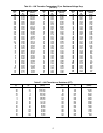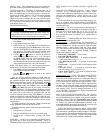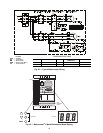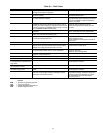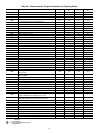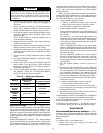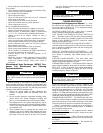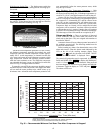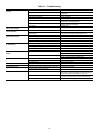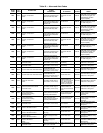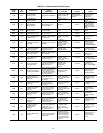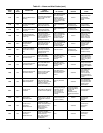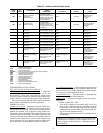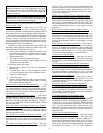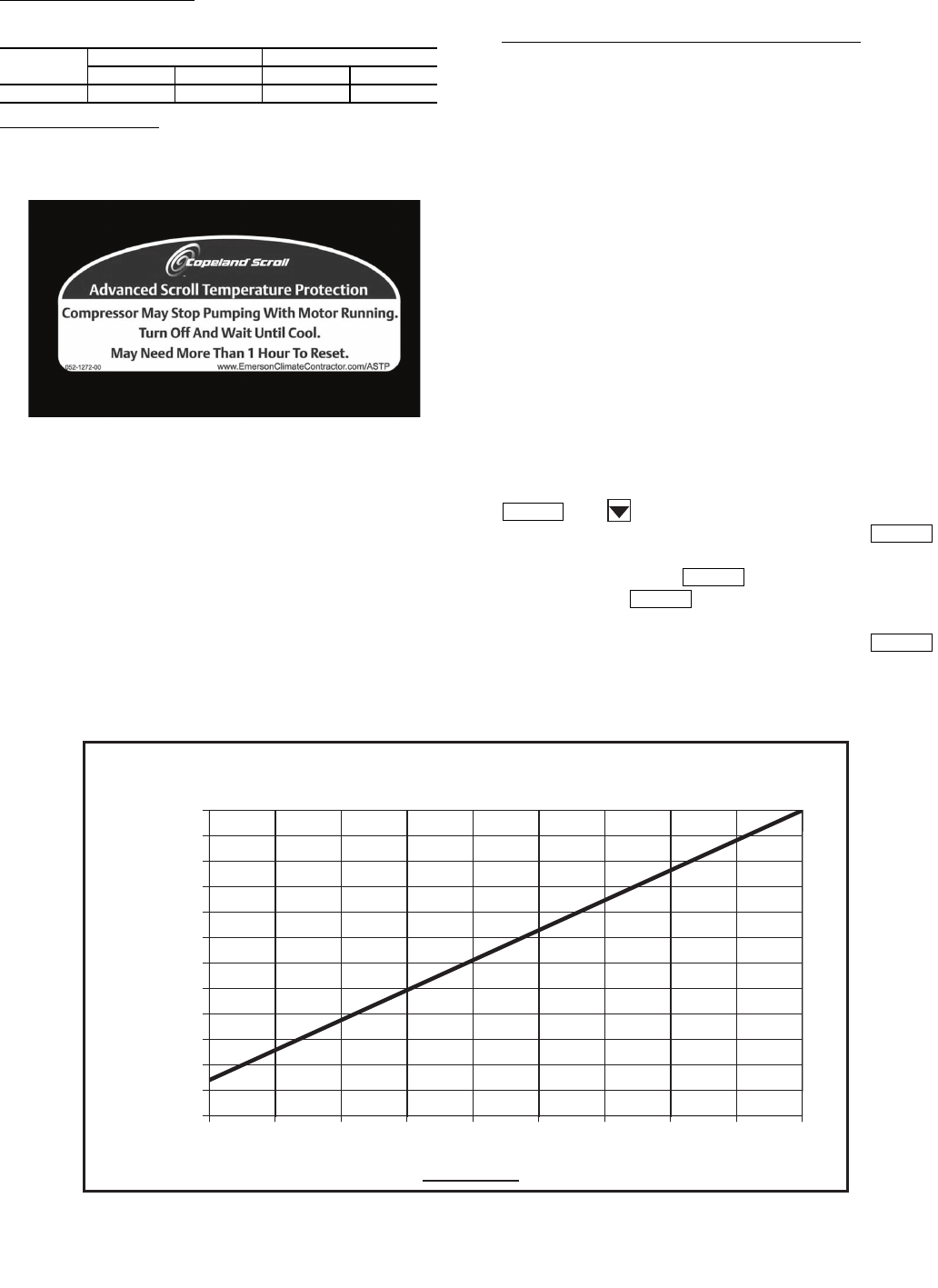
65
High-Pressure Switch Trip
— The high pressure switch has
opened. Below are the factory settings for the fixed high pres-
sure switch.
ASTP Protection Trip
— All non-digital Copeland compres-
sors are equipped with an advanced scroll temperature protec-
tion (ASTP). A label located above the terminal box identifies
models that contain this technology. See Fig. 34.
Advanced scroll temperature protection is a form of inter-
nal discharge temperature protection that unloads the scroll
compressor when the internal temperature reaches approxi-
mately 300 F. At this temperature, an internal bi-metal disk
valve opens and causes the scroll elements to separate, which
stops compression. Suction and discharge pressures balance
while the motor continues to run. The longer the compressor
runs unloaded, the longer it must cool before the bi-metal disk
resets. See Fig. 35 for approximate reset times.
To manually reset ASTP, the compressor should be stopped
and allowed to cool. If the compressor is not stopped, the motor
will run until the motor protector trips, which occurs up to
90 minutes later. Advanced scroll temperature protection will
reset automatically before the motor protector resets, which
may take up to 2 hours.
High Discharge Gas Temperature Protection
— Units
equipped with digital compressors have an additional thermis-
tor located on the discharge line, If discharge temperature ex-
ceeds 265 F (129.4 C), the digital compressor will be shut off.
Alarms will also occur if the current sensor board malfunc-
tions or is not properly connected to its assigned digital input. If
the compressor is commanded OFF and the current sensor
reads ON, an alert is generated. This will indicate that a com-
pressor contactor has failed closed. In this case, a special mode,
Compressor Stuck on Control, will be enabled and all other
compressors will be turned off. An alarm will then be enabled
to indicate that service is required. Outdoor fans will continue
to operate. The first outdoor fan stage is turned on immediately.
The other stages of fan will be turned on as required by SCT.
Alarms and Alerts — These are warnings of abnormal
or fault conditions, and may cause either one circuit or the
whole unit to shut down. They are assigned code numbers as
described in Table 42.
Automatic alarms will reset without operator intervention if
the condition corrects itself. The following method must be
used to reset manual alarms:
Before resetting any alarm, first determine the cause of the
alarm and correct it. Enter the Alarms mode indicated by the
LED on the side of the scrolling marquee display. Press
and until the sub-menu item RCRN “RESET
ALL CURRENT ALARMS” is displayed. Press .
The control will prompt the user for a password, by displaying
PASS and WORD. Press to display the default pass-
word, 1111. Press for each character. If the password
has been changed, use the arrow keys to change each individu-
al character. Toggle the display to “YES” and press .
The alarms will be reset.
30RAP UNIT
SIZE
CUTOUT CUT-IN
psig kPa psig kPa
010-060 650 4482 500 3447
Fig. 34 — Advanced Scroll Temperature
Protection Label
ENTER
ENTER
ENTER
ENTER
ENTER
Fig. 35 — Recommended Minimum Cool Down Time After Compressor is Stopped*
0
10
20
30
40
50
60
70
80
90
100
110
120
0 102030405060708090
Compressor Unloaded Run Time (Minutes)
Recommended Cooling Time
(Mi
nut
es)
*Times are approximate.
NOTE: Various factors, including high humidity, high ambient temperature,
and the presence of a sound blanket will increase cool-down times.



